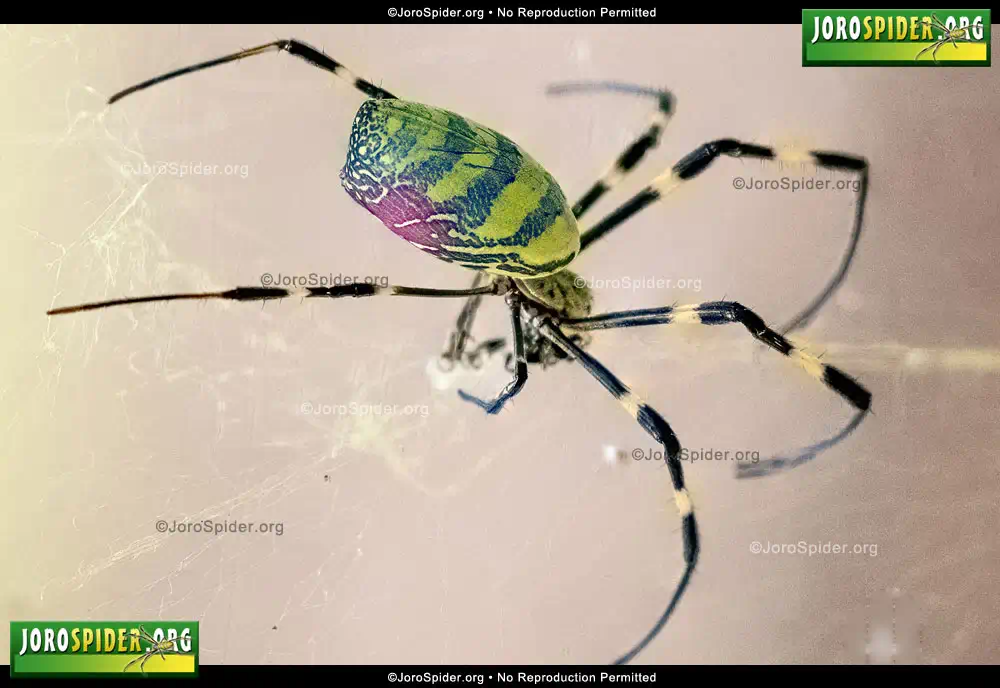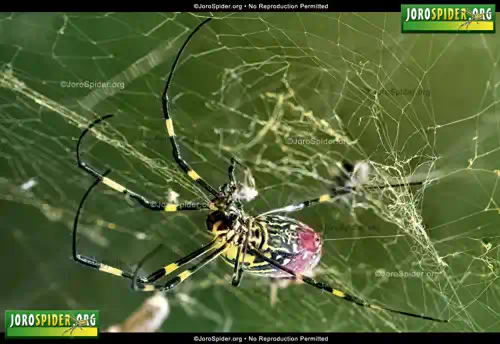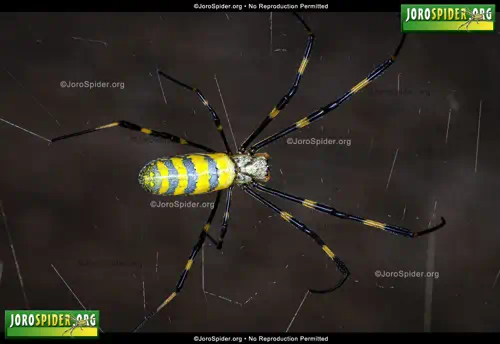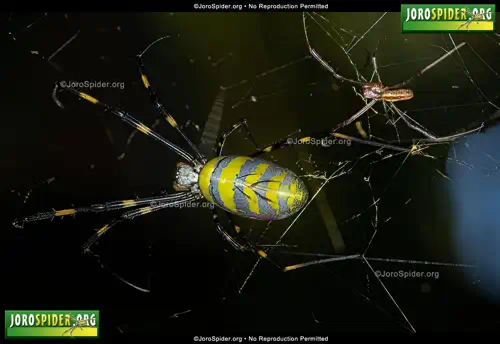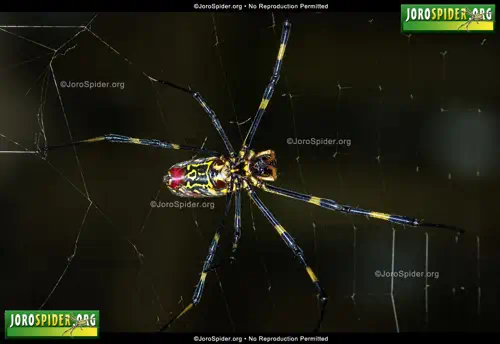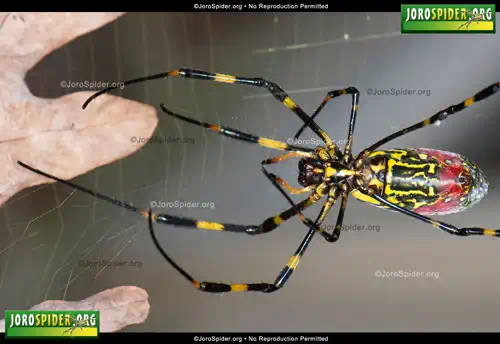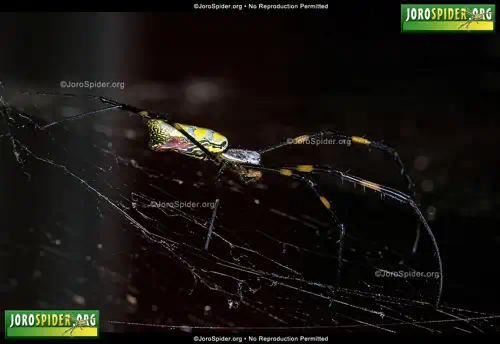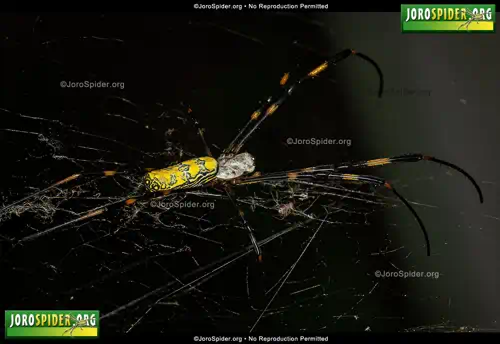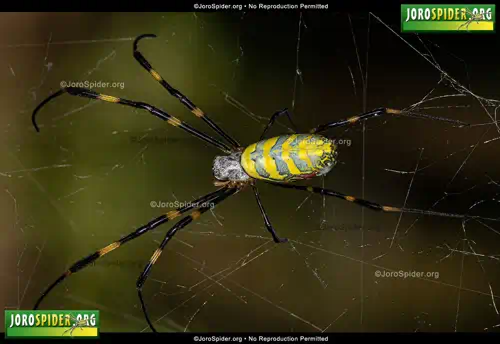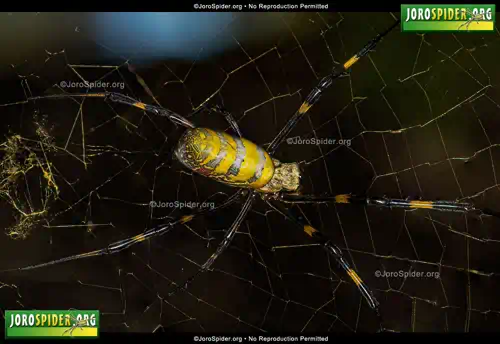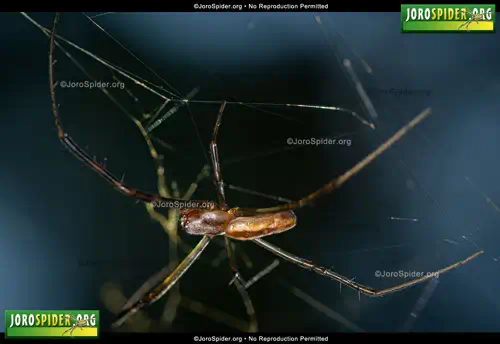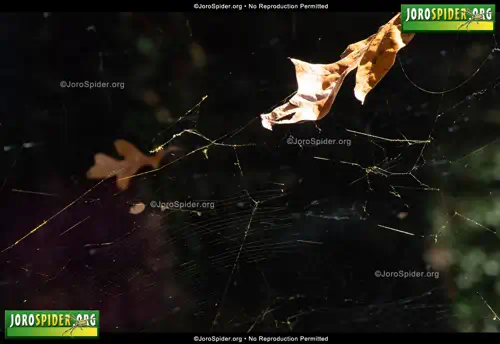Size
0.27in - 0.98in
(7mm - 25mm)
Origin
Eastern Asia
Colors
Black; Yellow; Blue; Gray/Grey; Red
Characteristics
8-Legged; Striped Legs; Striped Abdomen
Web-Spinner
Yes; Golden color; Waist-knee Height
Biting / Venomous
Yes, Though Non-Aggressive
Known Diet
Brown Marmorated Stink Bug
Natural Predators
Birds; Insects
The name of the Joro spider comes from Japanese folklore. A cunning shape-shifter, Jorogumo is a spider that can transform into a beautiful woman who then traps unsuspecting men, draining them of their life force. In reality, the Joro spider is not dangerous to people, pets or even plants that they reside on. However, the sheer size and the alarming colors of the Joro spider invoke trepidation, if not terror, to some who approach it. Like virtually every spider, it has venom, but its venom is too weak to be a medical concern (unless you are highly allergic to its particular venom, in which case medical attention is indeed necessary). Really, Joros are seemingly docile and quite shy, and they have not exhibited aggressive behavior. People may miss this gentle disposition because its appearance is that of a classic 'scary spider'. If its long black and yellow legs are completely stretched out, it can cover an adult's entire palm, which can be highly disconcerting to many. The tubular abdomen is covered in yellow hairs with gray bands, and its head region (the cephalothorax) is covered in silvery white ones. The conspicuous color combination makes it easy to spot, suggesting a boldness that some might equate with aggression. It creates huge webs between trees and shrubs, sometimes 7 to 9 feet wide, right at the height of most adults' chest or faces, making it possible to walk through one if not paying attention. The silk is a yellow or golden color, not the familiar white silk found in native spiders. The female weaves an intricate circular shape and sits upside-down in the center of its web, like many other kinds of spiders. Put altogether, a Joro spider can give a lot of humans the creeps, but many entomologists suggest just leaving them alone. If one takes up residence in a highly trafficked area in the yard, relocation, not termination, is the recommended course of action.

